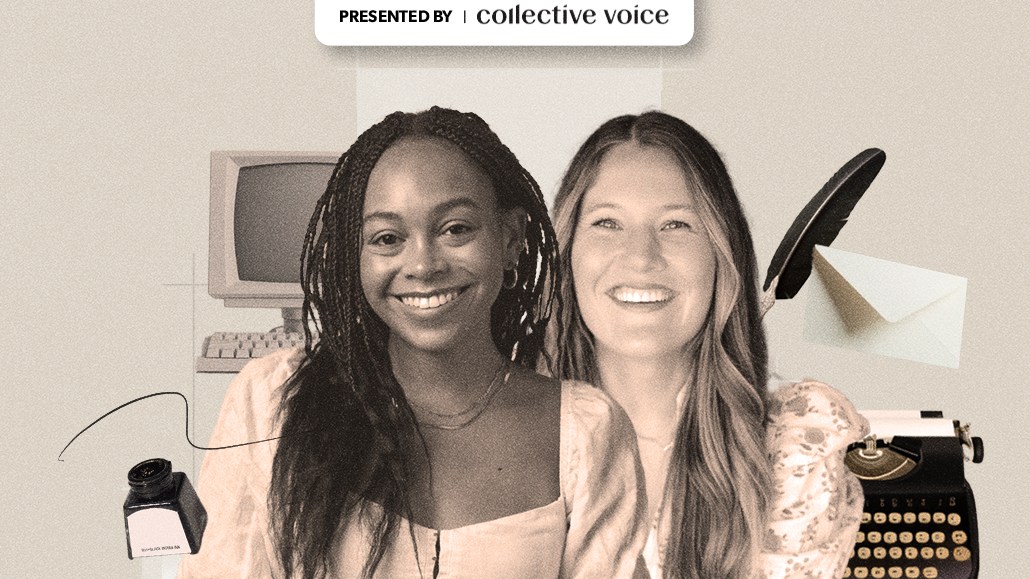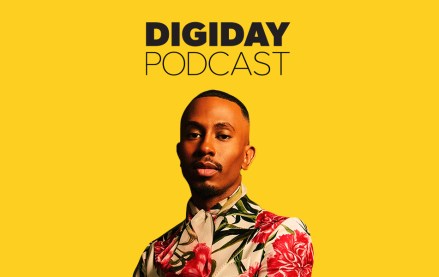Join us Dec. 1-3 in New Orleans for the Digiday Programmatic Marketing Summit
How Hunter Harris and Caroline Chambers have extended their Substack subscribers into monetizable communities

This article is part of a special Digiday Podcast series that covers how content creators are building their brands and earning revenue from various major social media platforms. More from the series →
Subscribe: Apple Podcasts • Spotify
In a world where video has become the predominant medium for content creators, Substack offers a reprieve in the form of the written word.
The subscription-based newsletter platform received a surge of interest during the pandemic, garnering hundreds of new creators — including Hunter Harris and Caroline Chambers — who were interested in monetizing their ideas without always needing to jump in front of a camera. And less than four years later, the platform has enabled these creators to monetize their content via thousands of paid and unpaid subscribers — not to mention advertiser sponsorship, affiliate links or even book deals.
In the third episode of the Digiday Podcast’s Creators series, Harris and Chambers discuss how they’ve transitioned their Substack subscriber bases into communities that ultimately help them feed the funnel of audience engagement.
Below are highlights from the conversation, which have been lightly edited and condensed for clarity.
Monetization strategies
Hunter Harris: [Advertising is] not really something that I thought about. I’ve gotten offers to have sponsored newsletter sends [but] I don’t even really do affiliate linking. I just link to stuff I like … I have the trust of my audience and enough people pay to support the newsletter to make this whole operation possible. And I don’t want to really do anything that takes any attention away from just sending a good newsletter to the people who pay for it every week. So no, I haven’t really explored doing any other kind of monetization beyond just paywalling.
Caroline Chambers: I have experimented with [advertising] on a very small basis [and] only with brands where it really, really makes sense. Like on Instagram, I can talk about absolutely anything because I don’t just talk about food; I talk about motherhood, I talk about friendships, I talk about marriage, I talk about my favorite tampon. But on Substack, it needs to be really about the food.
And I will say it’s lucrative because [on] Instagram, the algorithm doesn’t like paid content as much as it likes organic content, so it doesn’t show it to as many people … If you run an ad on a Substack, you know that it’s going to every single one of these inboxes no matter what … I can charge a lot more for those because a guaranteed 60,000 eyeballs are seeing it. Whereas on Instagram, you never really know.
Using other platforms to build an audience
Chambers: Instagram is my platform … I share a lot of my life on Instagram. I have three small boys, we have a lot of fun together and I share that on Instagram. And I think people see the life that I’m able to live and the fun that I’m able to have with my kids and my friends and my husband, and the type of food that I’m able to fit into the cracks of that day … People knew my kids had swim lessons that day. I had just gotten home from a two-week trip to Spain. I’m busy, I’m jet lagged, I’m exhausted, but I still have the time to throw together this simple recipe because this is the simplest version of it.
And I feel like that’s part of the reason for my high conversion rate to paid [subscriber] — and the fact that “What to Cook” is the number one food Substack — is that I really share glimpses into my life [on Instagram] and how I make that food happen within my busy, crazy working-mom life.
Harris: To be honest, I think that my personal Instagram has benefited more from the newsletter than my newsletter has benefited from Instagram. And especially once Elon [Musk] made Substack links not unfurl in a pleasing-to-the-eye way on Twitter [it’s not been a strong referral tool, either].
But I do have friends who work in social and brand marketing [who say], ‘There’s no excuse for you not turning on a front-facing camera and reading the newsletter or riffing on the newsletter headline or doing anything about the newsletter on your TikTok.’ And the truth is, yeah, you’re right. There’s nothing stopping me and yet, I just don’t want to do it.
Growing through community and two-way communication
Harris: Substack has this feature called Chat, which … someone from Substack told me that no one uses this except for you, like lowkey. I was shocked. Chat to me is like being in a group chat with everyone who reads the newsletter. It’s like being in a group chat with everyone who is the funniest person you’ve ever met.
These chats have like, sometimes even like 3,000 replies … If I’m watching the Superbowl, who do I want to talk about it with but people who read the newsletter?
I just started … going through the chat and picking out some of my favorite or more controversial posts and putting that into a separate newsletter send that goes out the next morning.
Chambers: I think starting from base zero on Instagram and Tiktok these days is tricky. There’s just so many creators out there cranking out content. But I do think that [on] Substack, you have the ability to really share your voice and get it out there with all this new, internal sharing stuff that they’re doing … If you become active on Notes and use the private chat with your subscribers, you can really really grow that way as well. I’ve seen a lot of people who have no Instagram presence, no TikTok presence — like no social media presence — having a lot of success on Substack.
More in Podcasts

The ‘hot dog vs. sandwich’ problem in AI advertising
The AI agents have come for programmatic advertising. And like AI’s invasion everywhere else, guardrails are needed, as Digiday editors discussed on this episode of the Digiday Podcast.

How The Times is using AI to model synthetic focus groups from human audiences
The British news publisher has worked with Electric Twin to create a synthetic audience research panel based on The Times’ human reader panel.

How Kalen Allen navigates brand safety and cultural polarization in the creator economy
As the line between politics and culture becomes more blurred, creators and influencers more often find themselves caught in the crosshairs.








